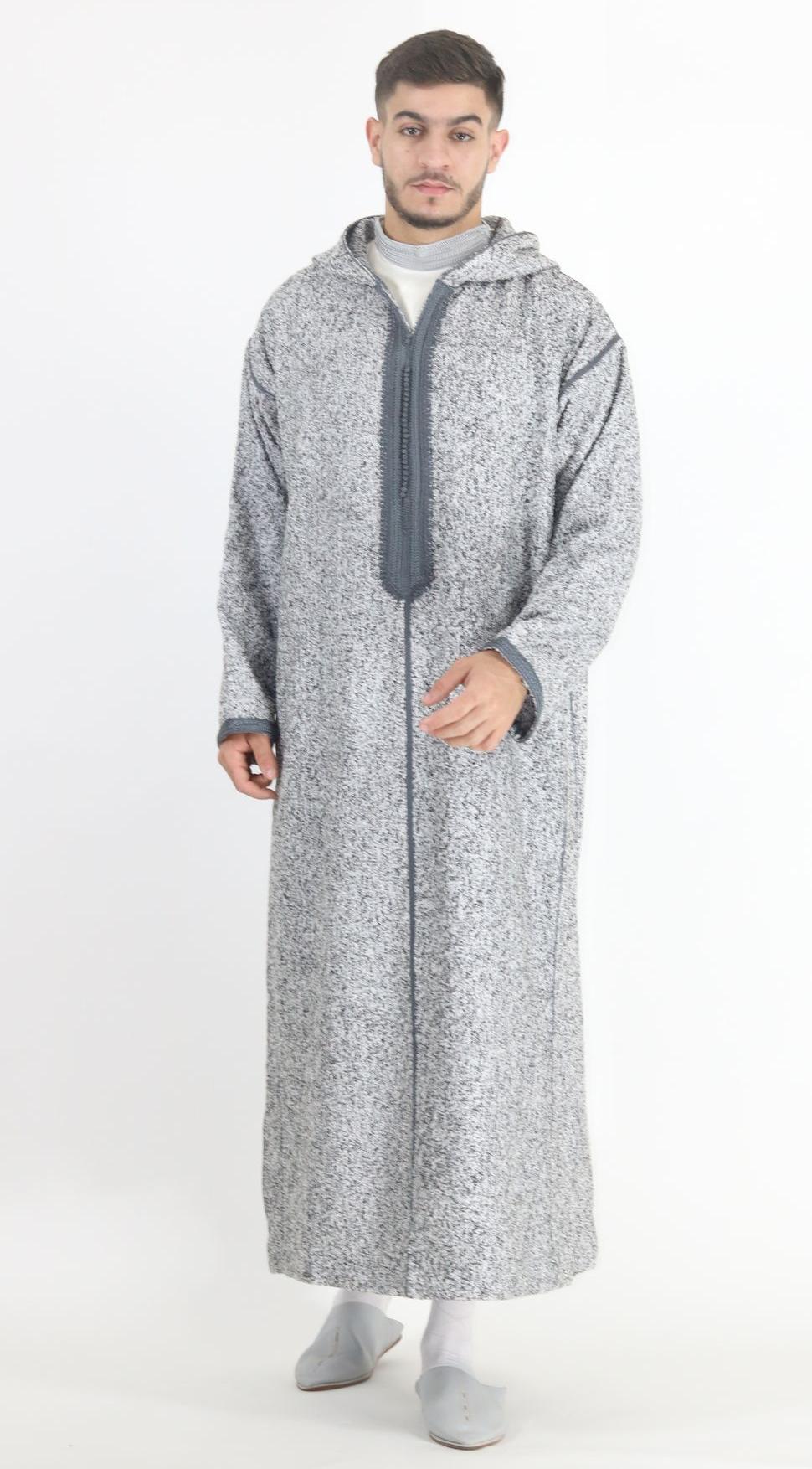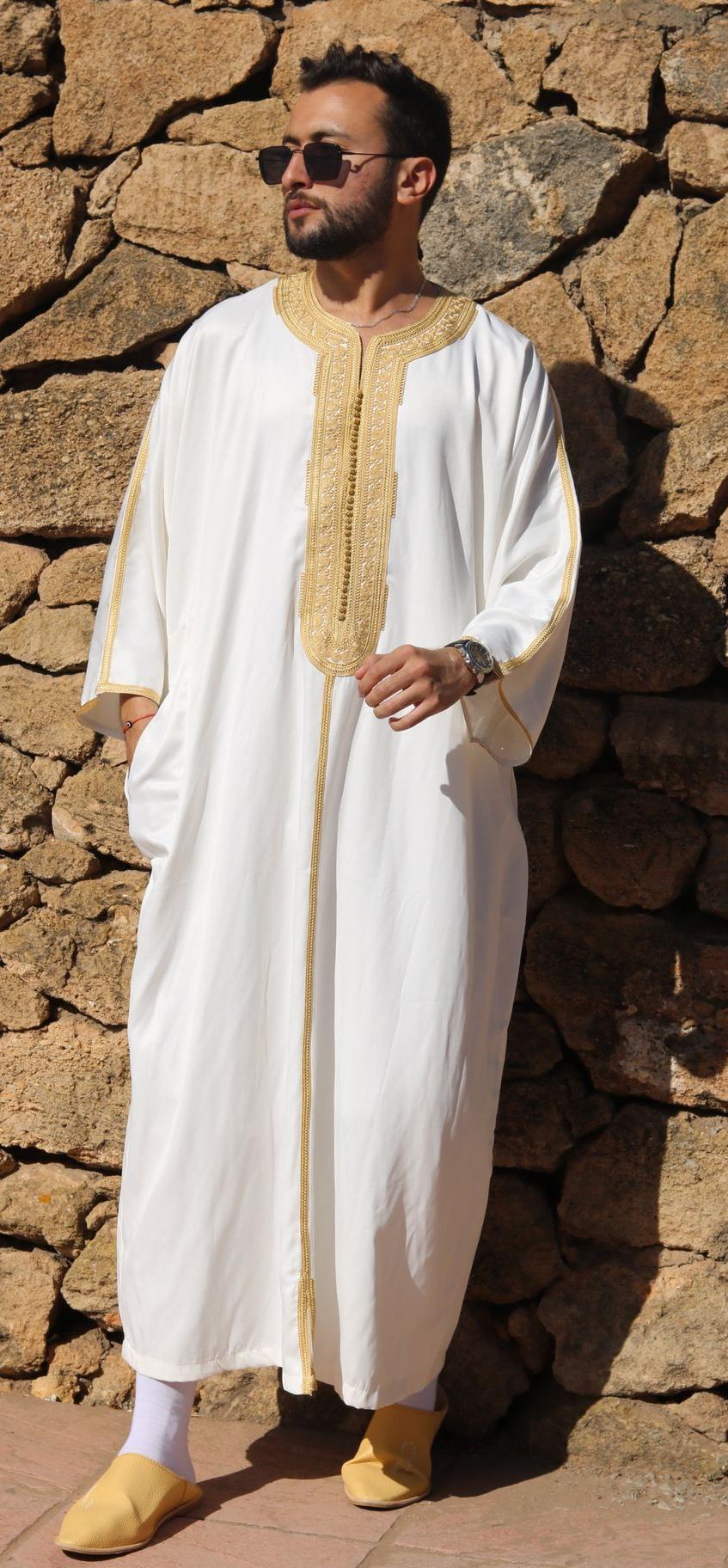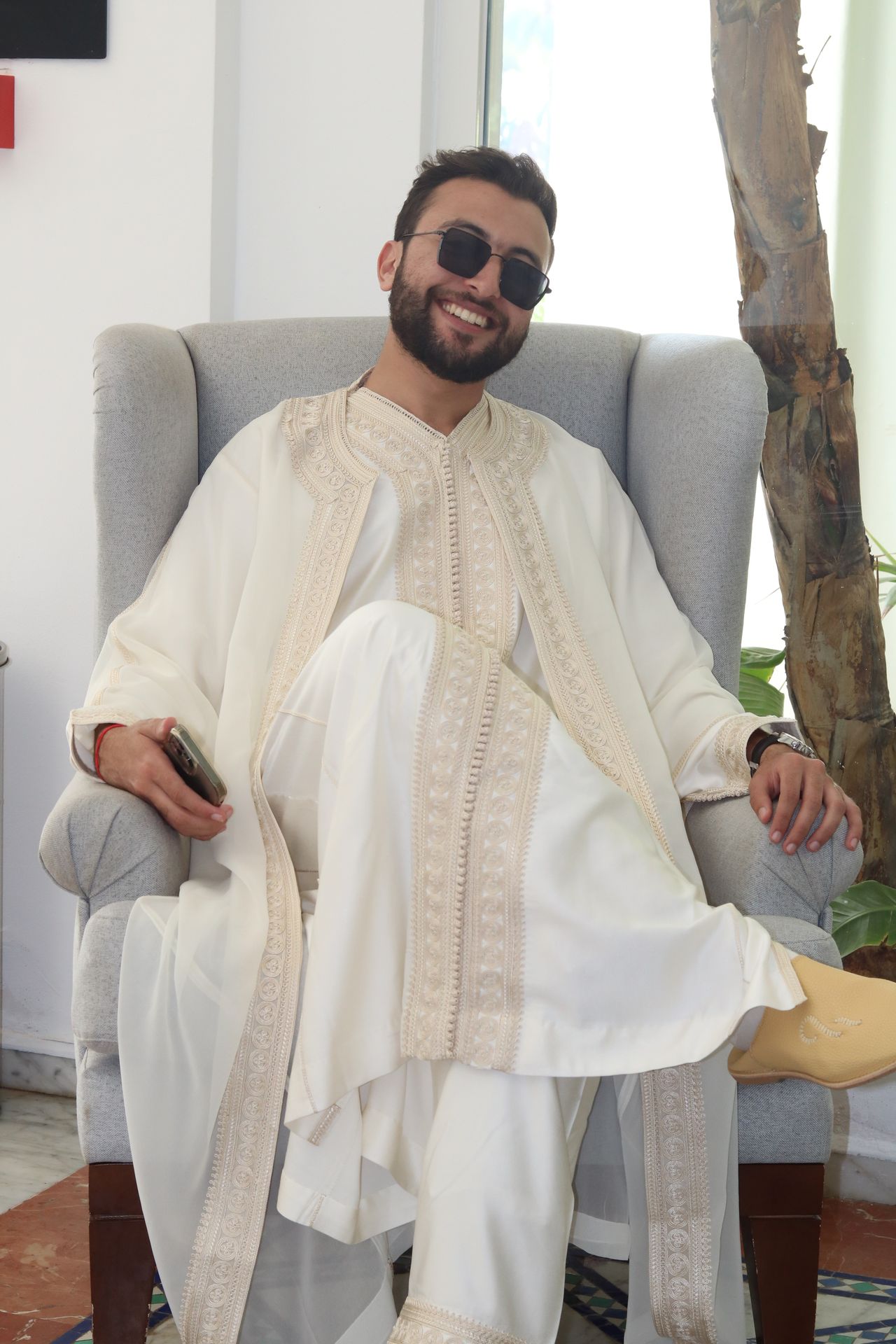The Importance of Traditional Moroccan Dress in Worship During Ramadan
Ramadan is a month of deep spiritual reflection, devotion, and worship for Muslims around the world. In Morocco, the observance of this holy month is intertwined with rich cultural traditions, including the wearing of traditional Moroccan dress. For men, garments such as the djellaba, gandora, and jabador are more than just clothing; they are an expression of cultural identity, respect, and reverence, especially during the sacred period of Ramadan. Let’s explore the significance of traditional Moroccan dress in worship during this special time.
Cultural and Spiritual Significance of Traditional Moroccan Dress
The Djellaba
The djellaba is a long, loose-fitting robe with a hood, worn by Moroccan men for centuries. Its design is both practical and symbolic, reflecting modesty and piety. During Ramadan, wearing a djellaba to the mosque or for family gatherings is a common practice. The djellaba’s simplicity and elegance embody the spirit of Ramadan, which emphasizes humility and devotion.
The Gandora
The gandora, another staple of Moroccan traditional dress, is a sleeveless robe often worn in warmer climates. It is particularly favored for its comfort and ease, making it ideal for long days of fasting. The gandora’s loose fit allows for freedom of movement, which is essential for performing daily prayers and engaging in other physical acts of worship.
The Jabador
The jabador, consisting of a tunic and pants, is a popular choice for special occasions during Ramadan, such as iftar (the meal to break the fast) and family gatherings. This traditional outfit is often adorned with intricate embroidery, symbolizing the beauty and cultural richness of Moroccan heritage. Wearing a jabador during these moments enhances the sense of occasion and respect for the traditions observed during Ramadan.
Enhancing the Worship Experience
Reflecting Humility and Modesty
Traditional Moroccan dress plays a crucial role in reinforcing the values of humility and modesty that are central to Ramadan. The simple yet elegant designs of these garments help worshippers focus on their spiritual practices rather than worldly distractions. By dressing modestly, individuals show respect for themselves, their community, and their faith.
Creating a Sense of Unity and Belonging
During Ramadan, the sense of community and unity among Muslims is heightened. Traditional Moroccan dress contributes to this feeling of togetherness. When men wear djellabas, gandoras, or jabadors, they visually express their shared cultural and religious heritage. This unity is especially evident during communal prayers and gatherings, where the collective display of traditional attire fosters a strong sense of belonging and solidarity.
Preserving Cultural Heritage
The wearing of traditional Moroccan dress during Ramadan is also a way of preserving and honoring cultural heritage. These garments have been passed down through generations, carrying with them the history and traditions of Moroccan people. By continuing to wear them, especially during such a significant time, individuals keep their cultural identity alive and ensure that future generations appreciate and understand their roots.
Practical Benefits During Ramadan
Comfort During Long Hours of Worship
Traditional Moroccan garments are designed with comfort in mind, which is particularly important during the long hours of fasting and prayer in Ramadan. The loose-fitting nature of the djellaba and gandora allows for better airflow and ease of movement, making it easier to stay comfortable and focused during worship.
Facilitating Prayer
The design of traditional Moroccan dress is well-suited to the physical demands of Muslim prayer, which involves standing, bowing, and prostrating. The loose, flowing fabric of these garments provides the necessary flexibility and coverage, allowing men to perform their prayers with ease and dignity.
The importance of traditional Moroccan dress in worship during Ramadan cannot be overstated. These garments are not merely clothes; they are symbols of cultural identity, spiritual devotion, and communal unity. By wearing traditional dress, Moroccan men not only honor their rich heritage but also enhance their worship experience, embodying the values of humility, respect, and reverence that are central to Ramadan. As this holy month approaches, the djellaba, gandora, and jabador will once again play a vital role in connecting individuals to their faith and their cultural roots, enriching the spiritual journey of Ramadan for all who partake.
As Ramadan approaches, embrace the rich cultural heritage of Morocco by incorporating traditional dress into your worship and daily practices. Explore our collection of djellabas, gandoras, and jabadors, and experience the profound connection between faith and tradition. Celebrate this sacred month with attire that honors your cultural identity and enhances your spiritual journey. Visit our website to discover the perfect traditional Moroccan garments for Ramadan, and join us in preserving and celebrating this beautiful heritage.


